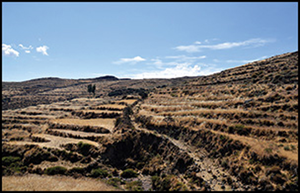Crossref Citations
This article has been cited by the following publications. This list is generated based on data provided by
Crossref.
Mader, Christian
Reindel, Markus
Isla, Johny
Behl, Martin
Meister, Julia
and
Hölzl, Stefan
2023.
In the land of the apu: Cerro Llamocca as a sacred mountain and central place in the pre-Columbian Andes of southern Peru.
Journal of Archaeological Science: Reports,
Vol. 49,
Issue. ,
p.
104045.
Alday, Camila
García, Maria Angélica
Alarcón, Carmela
and
Beresford-Jones, David
2023.
The use and context of fiber plants during the middle preceramic: evidence from La Yerba II and III, south coast of Peru.
Frontiers in Environmental Archaeology,
Vol. 2,
Issue. ,
Poulallion, Eve
Galván, Violeta A. Killian
Seldes, Verónica
Zigarán, María Fernanda
Browning, Gabriela Recagno
Fourel, François
Clauzel, Thibault
Flandrois, Jean-Pierre
Séon, Nicolas
Simon, Laurent
Amiot, Romain
and
Lécuyer, Christophe
2024.
The Inca child of the Quehuar volcano: Stable isotopes clue to geographic origin and seasonal diet, with putative seaweed consumption.
Journal of Archaeological Science: Reports,
Vol. 59,
Issue. ,
p.
104784.
Mader, Christian
Godde, Philipp
Behl, Martin
Binder, Christoph
Hägele, Elena
Isla, Johny
Leceta, Fernando
Lyons, Mike
Marsh, Erik
Odenthal, Rachel
Fernengel, Emilia
Stryjski, Paul
Weber, Ann-Kristin
Reindel, Markus
and
Meister, Julia
2024.
An integrative approach to ancient agricultural terraces and forms of dependency: the case of Cutamalla in the prehispanic Andes.
Frontiers in Environmental Archaeology,
Vol. 3,
Issue. ,
Leceta, Fernando
Binder, Christoph
Mader, Christian
Mächtle, Bertil
Marsh, Erik
Dietrich, Laura
Reindel, Markus
Eitel, Bernhard
and
Meister, Julia
2024.
The impact of agriculture on tropical mountain soils in the western Peruvian Andes: a pedo-geoarchaeological study of terrace agricultural systems in the Laramate region (14.5° S).
SOIL,
Vol. 10,
Issue. 2,
p.
727.
Reid, David A.
Williams, Patrick Ryan
Cardona Rosas, Augusto
Goldstein, Robin Coleman
Dussubieux, Laure
Banikazemi, Cyrus
and
Rademaker, Kurt
2024.
Obsidian Procurement and Exchange at the Apogee of Empire: Wari Political Economy in Arequipa, Peru.
Latin American Antiquity,
p.
1.
Rademaker, Kurt
2024.
Updated Peru archaeological radiocarbon database, 20,000–7000 14C BP.
Quaternary International,
Vol. 703,
Issue. ,
p.
32.
de la Fuente Castro, Constanza
Cortés, Constanza
Raghavan, Maanasa
Castillo, Daniela
Castro, Mario
Verdugo, Ricardo A
Moraga, Mauricio
and
Ortega-Del Vecchyo, Diego
2024.
The Genomic and Cultural Diversity of the Inka Qhapaq Hucha Ceremony in Chile and Argentina.
Genome Biology and Evolution,
Vol. 16,
Issue. 9,
Hernández Castillo, Daniel
Troncoso, Andrés
Méndez, César
Pascual, Daniel
Armstrong, Felipe
Nuevo-Delaunay, Amalia
Grasset, Sebastián
Pérez, Isidora
Vera, Francisca
Delgado, Manuela
Escudero, Antonia
Pino, Mariela
and
Larach, Pablo
2025.
12,000 years away from the sea: Long-term circulation of Pacific shells in the Semiarid North of Chile (South America).
Quaternary Science Reviews,
Vol. 348,
Issue. ,
p.
109112.
Mader, Christian
Godde, Philipp
Hägele, Elena
Lyons, Mike
Weber, Ann‐Kristin
Odenthal, Rachel
Stryjski, Paul
Binder, Christoph
Leceta, Fernando
Isla, Johny
Reindel, Markus
and
Meister, Julia
2025.
Mapping and Geospatial Analysis of Ancient Terrace Agricultural Systems in Lucanas Province, Peruvian Andes, Based on Satellite Imagery, High‐Resolution DSMs, and Field Surveys.
Geoarchaeology,
Vol. 40,
Issue. 2,



